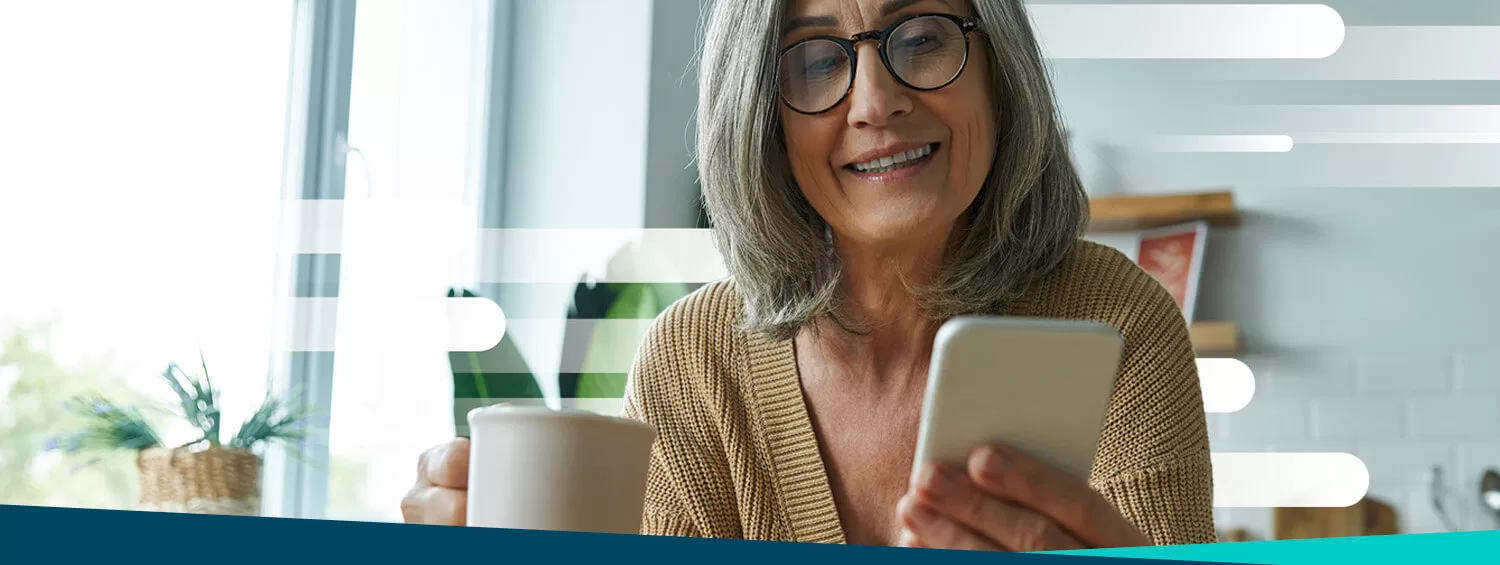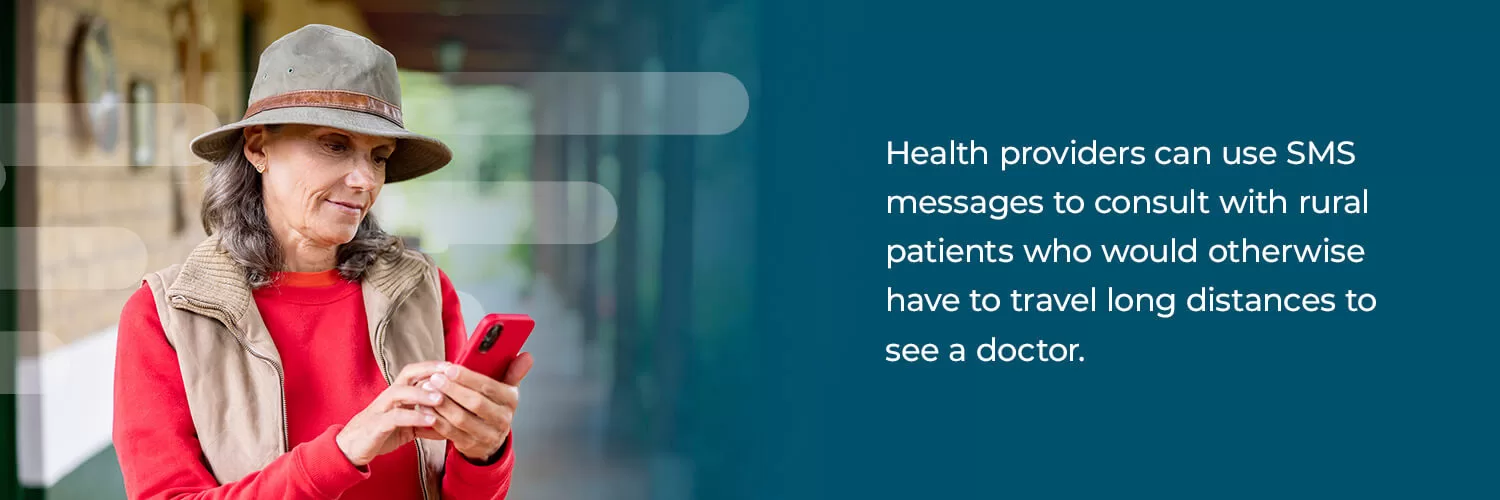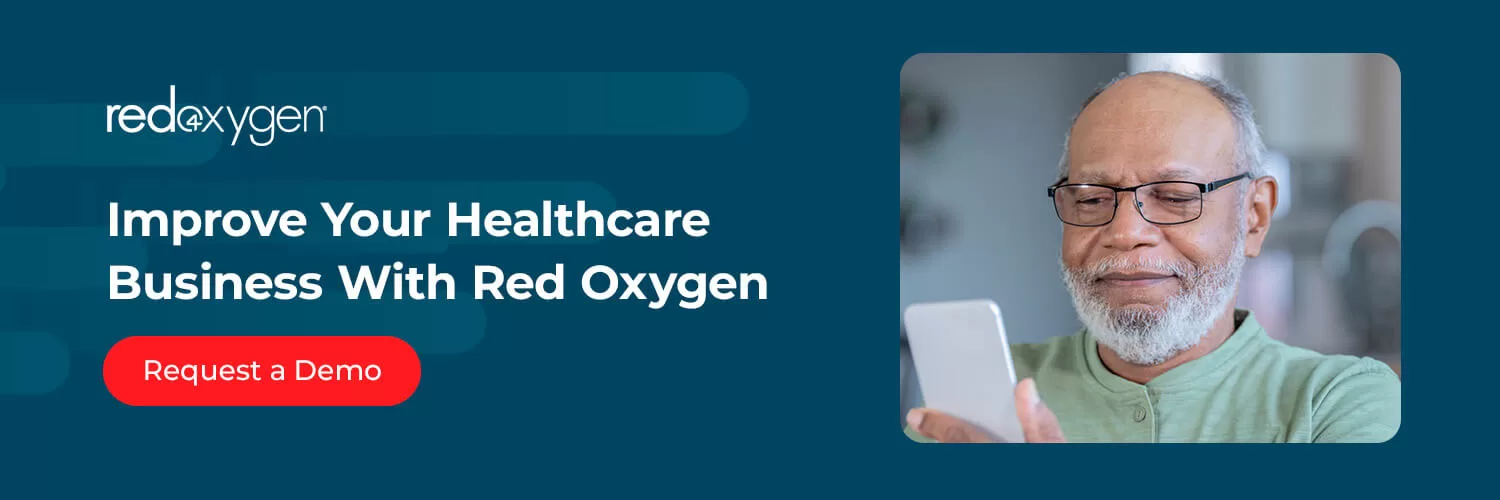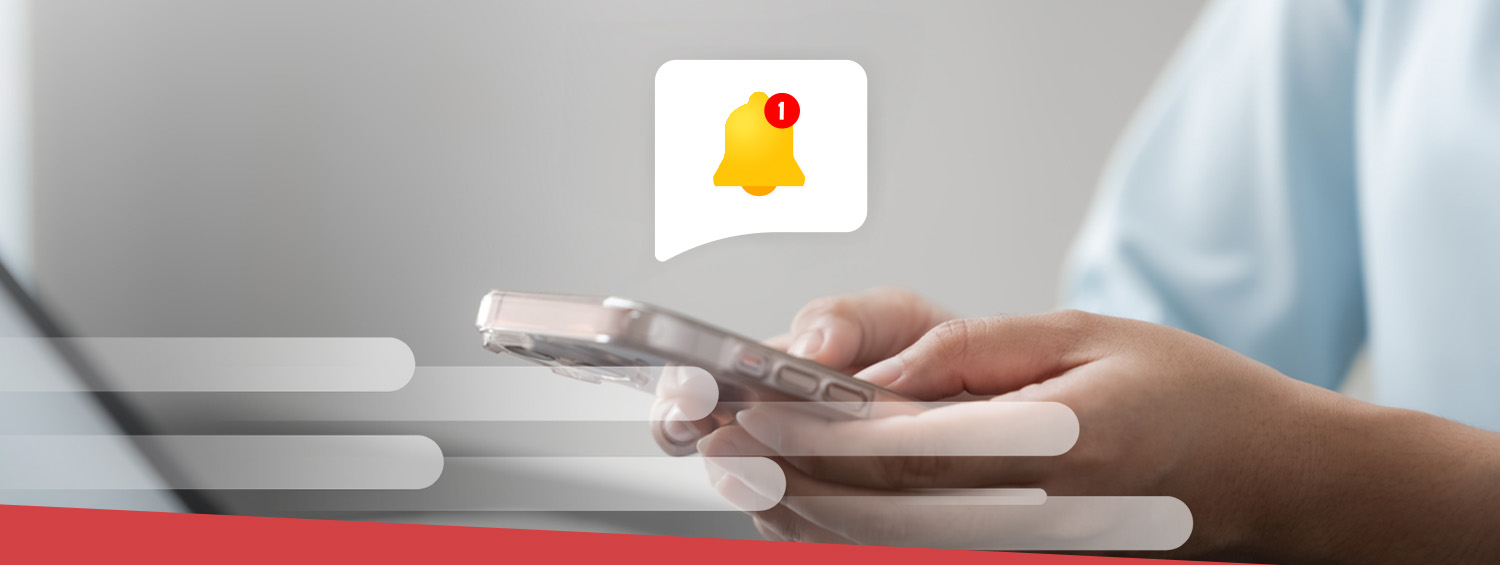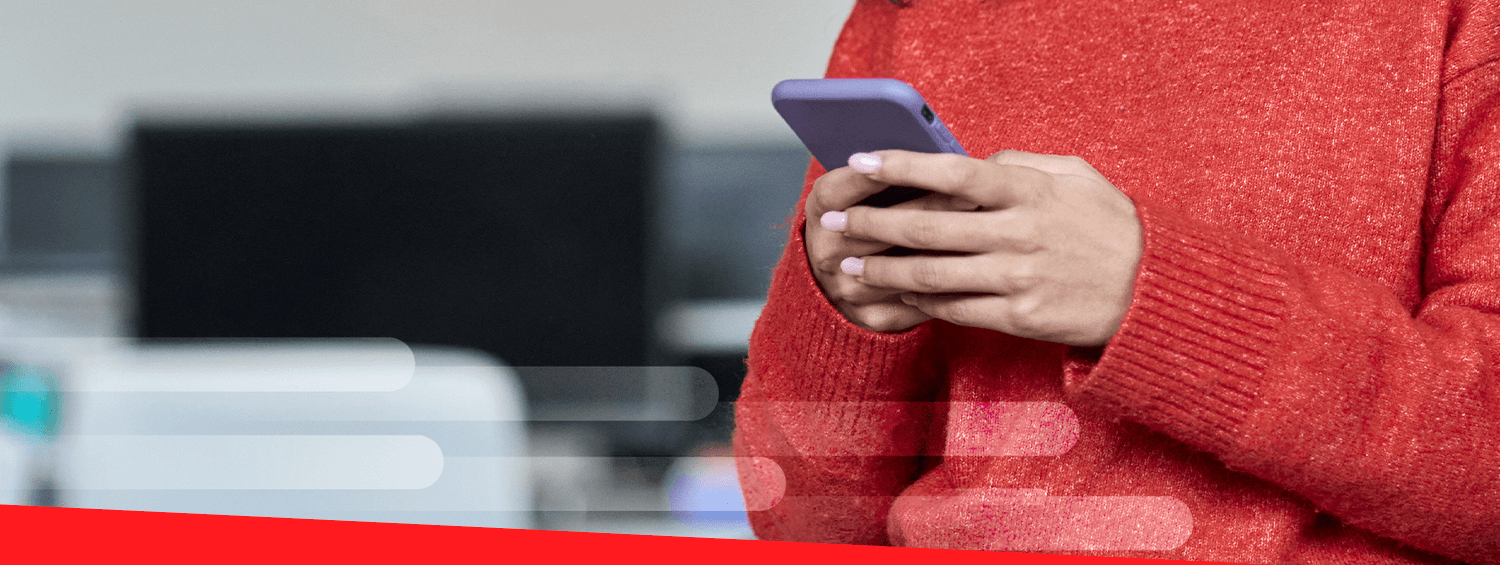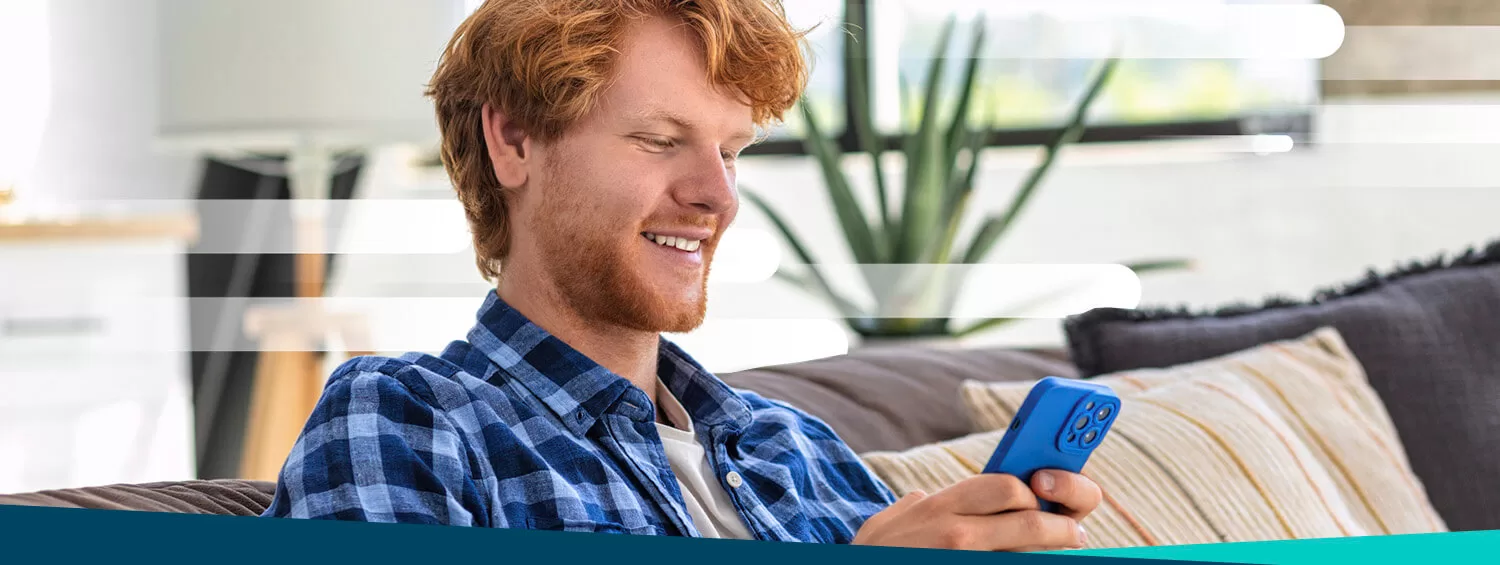As the healthcare industry shifts toward more patient-centric care, immediate communication between patients and providers is becoming increasingly valuable, especially for those who require at-home healthcare services.
In particular, home health companies need useful communication tools to provide quality care and get ahead of their competition. Improve your home health business and enhance patient accessibility and coordination among health providers.
Benefits of SMS for At-Home Healthcare
SMS messaging in the healthcare industry has been gaining popularity over the past few years. Here are some of the benefits of using SMS messaging for at-home healthcare.
Reduced Operating Costs
Firstly, SMS messaging can significantly reduce operating costs for home health companies. SMS messaging is an affordable communication option that allows healthcare providers to send messages to multiple patients simultaneously, saving time and money compared to traditional phone calls or in-person visits. With SMS messaging, healthcare providers can streamline patient communication, reducing the need for expensive staffing.
Higher Efficiency
Another benefit of using SMS for at-home healthcare is increased efficiency. SMS messaging can help healthcare providers manage patient care with fewer steps. By automating manual administrative tasks, be it scheduling or sending reminders, SMS messaging can help save time and resources—allowing health companies to focus on their patients’ needs.
Improved Patient Experience
SMS messaging can also improve the patient experience. Patients can receive updates on their care plans, medication schedules and appointments directly on their mobile devices. This convenience can make them more satisfied with the services you provide.
Reduced No-Shows
Fewer no-shows are another advantage of using SMS messaging for at-home healthcare. By sending appointment reminders via SMS, healthcare providers can improve patient attendance rates. Health professionals can save time and resources without following up with patients who miss appointments.
Better Cash Flow
Finally, SMS messaging can enhance cash flow for home health companies. With automated bill reminders and payment options, healthcare providers can reduce the time it takes to collect patient payments.
Examples of SMS Use in At-Home Healthcare
SMS has become an indispensable communications tool for the healthcare industry, especially for at-home healthcare. As we discussed earlier, SMS can streamline communication and the overall patient experience. In this section, we will explore some practical examples of how at-home health providers are using SMS.
Reach Rural Patients With Telehealth Consultations via SMS
Telehealth consultations are becoming increasingly popular, especially in remote areas. Health providers can use SMS messages to consult with rural patients who would otherwise have to travel long distances to see a doctor.
Send Medication Adherence Reminders to Patients
Health companies can aid medication adherence by sending patients reminders to take their meds on time, with the correct dosages and instructions.
Remotely Collect and Monitor Data
SMS messages can also collect data from patients remotely. For example, health providers can ask patients to send regular updates on their vital signs or symptoms via SMS and then monitor the information provided.
Send Appointment Reminders and Help Patients With Scheduling
SMS can alert patients to upcoming appointments and help them schedule new ones. Home health companies can use SMS messaging to send appointment reminders and receive confirmations and cancellations through text messages.
Provide Education and Support to Patients
SMS messages can provide patients with educational materials and support. These can include information on managing their condition, tips for staying healthy and guidance on using medical equipment.
Send Bill Reminders to Receive Payments
Health companies can send outstanding bill information to patients via SMS to help remind patients to pay.
Verify Patient Information
Finally, health companies can use SMS messages to remind patients to update or verify their information such as their address, date of birth and insurance information.
To sum it all up, let’s look at the following example. Communication with a nurse using SMS can quickly address patient needs and concerns without a phone call or in-person visit. Additionally, home care texting software can facilitate communication between patients, their families and healthcare providers, allowing for faster and more efficient care coordination.
Best Practices for Implementing SMS in At-Home Healthcare
While SMS messaging can be a valuable tool in at-home healthcare, it is crucial to use it effectively and responsibly. Here are some best practices for implementing SMS messaging in at-home healthcare.
Ensure Patient Privacy and Security
Patient privacy and security should always be priorities when using SMS messaging in healthcare. Health providers must keep patient information confidential and secure, and messaging platforms should meet specific compliance standards.
Additionally, health providers must ensure compliance with relevant regulations and laws, such as the Health Insurance Portability and Accountability Act of 1996. HIPAA sets standards for protecting sensitive patient health information, and healthcare providers must take measures to ensure that SMS messaging does not compromise this information.
It’s also crucial for healthcare providers to refrain from sending personal information through standard SMS messaging platforms, which are not specifically for healthcare communication and do not provide the same level of security as medical-specific provider software. Instead, providers should use HIPAA-compliant messaging platforms that have the necessary security features to protect patient information.
Use Clear and Concise Messaging
When communicating with patients via SMS messaging, use concise, easy-to-understand language. Avoid medical jargon or complex terminology, and keep messages brief and to the point.
Additionally, you should not use abbreviations, acronyms or emojis when communicating with patients via SMS messaging. Shorthand and acronyms may confuse patients who might not be familiar with medical terminology, while too many emoji can be distracting and may not convey the intended message.
Healthcare providers should also be mindful of the potential for confusion with emoji, as some patients may interpret them differently. By keeping messages brief and free of unnecessary abbreviations or symbols, healthcare providers can ensure their messages are easily understandable and convey the intended information.
Provide Opt-Out Options
Patients should always have a choice to opt out of receiving SMS messages if they no longer want to receive them. You can provide opt-out instructions in each message. It’s vital to emphasize that opting out isn’t a permanent decision. Patients should be aware that they can easily opt back in to receive messages anytime if they change their minds.
Accomplish this by messaging the healthcare provider and asking them to rejoin the program. Providing this option can help patients feel more comfortable with the messaging program, knowing that they have control over their communication preferences.
Disclose Two-Way Texting
Two-way texting allows for real-time communication between patients and healthcare providers. With two-way texting, patients can ask questions or provide updates on their condition, and healthcare providers can respond quickly with advice or recommendations.
Healthcare companies must clearly define expectations around replies when offering two-way texting. Patients should have an idea of how quickly they can expect a response, and companies should ensure they have staff available to respond promptly. Organizations can accomplish this by implementing an automated response that lets patients know when to expect a reply.
Integrate SMS Into Existing Healthcare Workflows
To maximize SMS messaging with at-home healthcare, it is crucial to integrate it into existing workflows. That means coordinating messaging and ensuring consistency across all channels, such as SMS messaging, phone calls and email.
For example, SMS messaging can quickly and efficiently communicate with patients and their families, but you should always make messages respectful and compassionate. Similarly, you can use home care texting software as a valuable tool, but you should ensure it is consistent with existing workflows and communication protocols.
Improve Your Healthcare Business With Red Oxygen
SMS messaging has proven to be invaluable in home healthcare services. By providing a simple and effective communication method between patients and providers, SMS messages may improve efficiency, reduce costs and increase patient satisfaction. With its ability to send appointment reminders, telehealth consultations, medication reminders and remote monitoring, SMS messaging has become an integral part of modern healthcare.
If you want to improve your healthcare business with SMS, Red Oxygen is your solution. With our easy-to-use platform, you can send SMS messages from your computer to any mobile device, and with the option to single out people or send messages to your entire contact list, Red Oxygen has everything you need to get started.
Request a demo today and see how SMS can improve at-home healthcare for your patients and your business.


